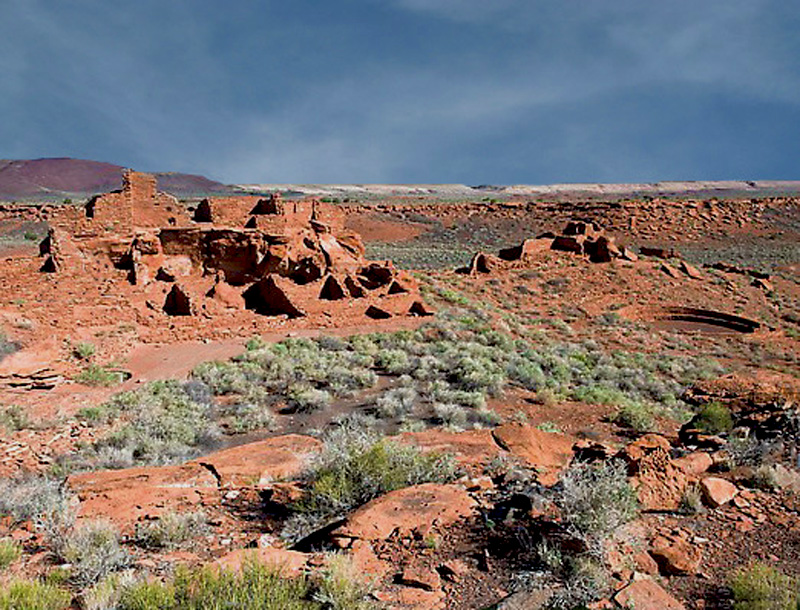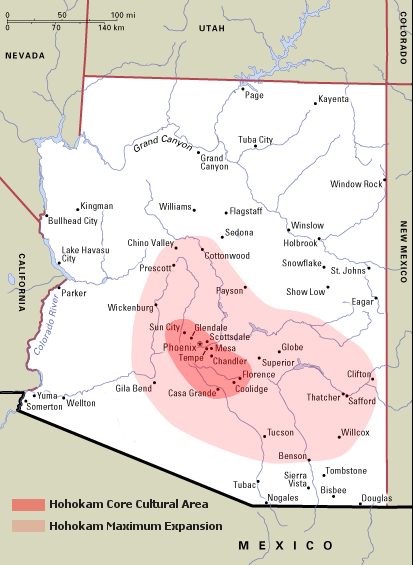
The Maricopa were thrown together with groups in the Gila River, and the Pima with groups that were further inland in Sonora. The Papago to the east of the Sonoyta River and Organ Pipe with those of the Colorado River-the Cocopah, Pai-Pai, and Yuma. Explorers, soldiers, missionaries and others put together different groups they thought shared a common territory, language, physical characteristics, and a similar culture: the Papago de la Arena or Areneños with the people from the El Pinacate and the Cabeza Prieta region. The colonizers tried to distinguish and identify the people they encountered. These newcomers introduced new technologies, new languages, a new social structure, a new culture, and new crops, livestock, and diseases. The other event that disturbed the lifestyle of the region’s residents in the heart of the Sonoran Desert was the arrival of the first Europeans in 1540. Between 13 a great flood destroyed the irrigation system of the Río Salado and was followed by a ten-year cycle of drought and extreme drought until 1600.
Hohokam anasazi series#
The first was a series of changes in weather patterns brought on by floods and droughts. Two big events disturbed the lifestyle of the region’s inhabitants. The Hohokam, Anasazi and Mogollón, as well as the Tohono O’odham, Hopi, Zuni, Sobaipuris, Pima, and other tribes in the region had a complex network of linguistic and cultural ties.

It’s very difficult to classify cultures based on their ceramics because these cultures all traded among themselves, married outside of their own tribe, changed locations, or migrated. The Anasazi and Mogollón ceramics were brown and red, and artisans used patterns with traditional symbols to recount their stories. People of the Trincheras culture used purplish colors and polychromatic designs. The Patayan showed “Stucco” finishes (plaster) and curved edges. The ceramics of the Hohokam were simple red and brown toned ceramics with some variations in the designs. The use of ceramics began 2,800 years ago and diversified according to the different regions.

The ancestral ball game popular throughout Mesoamerica was introduced during the Mogollón culture in Paquimé. Turquoise, which was valued by Mesoamerican cultures, came almost entirely from Arizona and New Mexico. Although agriculture was present long before, it’s doubtless that contact with Mesoamerican tribes had to do with these Ancestral Pueblos’ perfected agricultural techniques. They are known as the Anasazi, Patayan, Hohokam and Mogollón cultures.Ĭrop irrigation canals date back 3,200 years. Later, other prehistoric cultures called “Ancestral Pueblos” rose towards the north and east of this arid region, where they used adobe to build their towns. įrom 9,500 to 1,800 years ago, climate changed in such a way that there were great transformations and displacements in the geographical position of plants. In the El Pinacate area, during the months of the winter thaw, the Colorado River reached the area now known as Adair Bay and the Sonoyta River surrounded the Santa Clara Mountain. Researchers agree that during this era there was better weather and humans had greater access to freshwater bodies. Several cultures thrived here in the era before the use of ceramics: the Malpaís, then the San Dieguito, followed by the Amargosa phase 1, and later the Amargosa phase 2, the latter flourishing in the California and Nevada deserts.


They utilized fire, but had not yet developed the use of metal. Experts at using the spear, they then developed the use of bows, arrows and the atlatl (a spear-throwing lever). They were hunters who arrived from Asia through the Bering Strait and followed mega fauna such as mastodon and mammoth.
Hohokam anasazi cracked#
They cracked rocks to use as tools, used obsidian to make knives, and utilized basalt rocks to make metates (grinding stones) and “hands” (smooth hand-held stones), rotating mortars, and mills to grind, but they also made holes in large rocky surfaces where they ground various types of seeds. The first settlers lived in caves, in sleeping circles that consisted of a circular figure made up of stones and branches, and in log huts, some partially underground. In the beginning, they were nomads who hunted, gathered, fished, used salt, shells, and obsidian. Human beings have lived in this region in the heart of the Sonoran Desert for more than 13,000 years and, according to Julian Hayden, there is evidence that they had been here more than 30,000 years ago. Tohono O’odham (Papago) woman wearing a basket tray headpiece, photograph by Edward S.


 0 kommentar(er)
0 kommentar(er)
